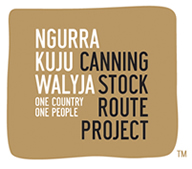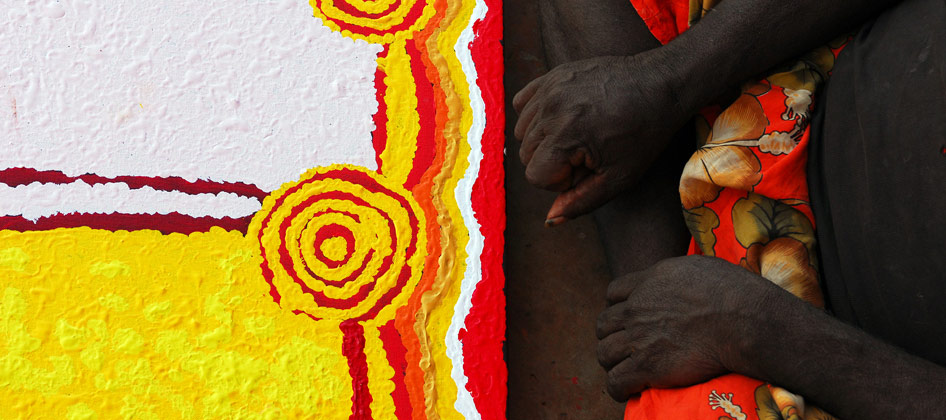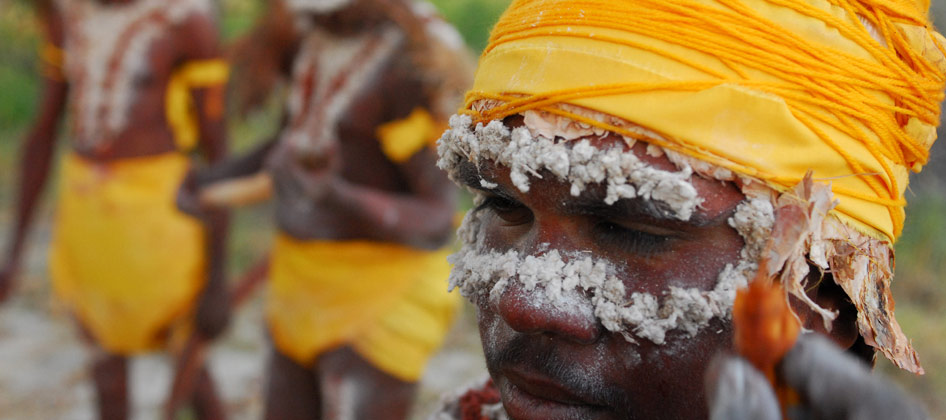About
Ngurra Kuju Walyja — One Country One People — The Canning Stock Route Project tells an intercultural and intergenerational story of community, collaboration and reconciliation. Initiated by FORM in 2006, the Project always aimed to be more than the production and presentation of art: asking audiences to get to know the artists, and learn from their stories and aspirations, to explore the cultural diversity of Aboriginal communities and their interconnections with each other and their Country and their part in a greater Australian story.
Collaborative networks between families, communities, creative industries, corporate and government agencies, not-for-profit enterprises and institutions have enabled the telling of these stories, adding texture and depth to Australian narratives of history, identity, belonging, reciprocity and change. As a consequence, a light has been shone on an untold history, through return to country trips and community workshops, creative professional development programs, a national touring exhibition, a multimedia suite, publications and the Project’s cultural repository.
Under the direction of Aboriginal stakeholders, Ngurra Kuju Walyja grew to become a major interdisciplinary project involving 10 remote Aboriginal community arts and cultural enterprises, a large cross-cultural team of curators, filmmakers and cultural advisors, over 120 Aboriginal artists and contributors, and numerous national partners.
In late 2008 the National Museum of Australia permanently acquired the Canning Stock Route Collection – 140 artworks curated by the Canning Stock Route Project team over three years – and entered into a partnership with FORM to produce Yiwarra Kuju – The Canning Stock Route. This major exhibition of paintings, cultural artefacts, film, new media and photography describes the history of the Canning Stock Route from the perspective of Aboriginal people, told in their own words, and through art. Yiwarra Kuju launched at the National Museum of Australia in Canberra in July 2010 and attracted more visitors to the Museum than any other exhibition in its history.
Genesis
The Canning Stock Route cuts a single line across three deserts — the Great Sandy, the Little Sandy and the Gibson — along nearly 2000 kilometres of unforgiving dirt track and hundreds of sandhills. Although the non-Indigenous history of the stock route is fairly well-known, the Aboriginal story has until now only been glimpsed in paintings of celebrated Aboriginal artists like Rover Thomas and Eubena Nampitjin. The Canning Stock Route Project set out to tell this story through Aboriginal art and in Aboriginal voices.
Working directly with the art centres, the Canning Stock Route Project researched the artists’ connections to the Canning Stock Route story, recording hundreds of oral histories, painting stories and hundreds of hours of exquisitely shot high definition digital film. Artists and community members were so keen to be involved in the project that the number of participants swelled from 30 to 60 in 2007, and to 120 in 2008.
To delve into the history of the Canning Stock Route visit History.











